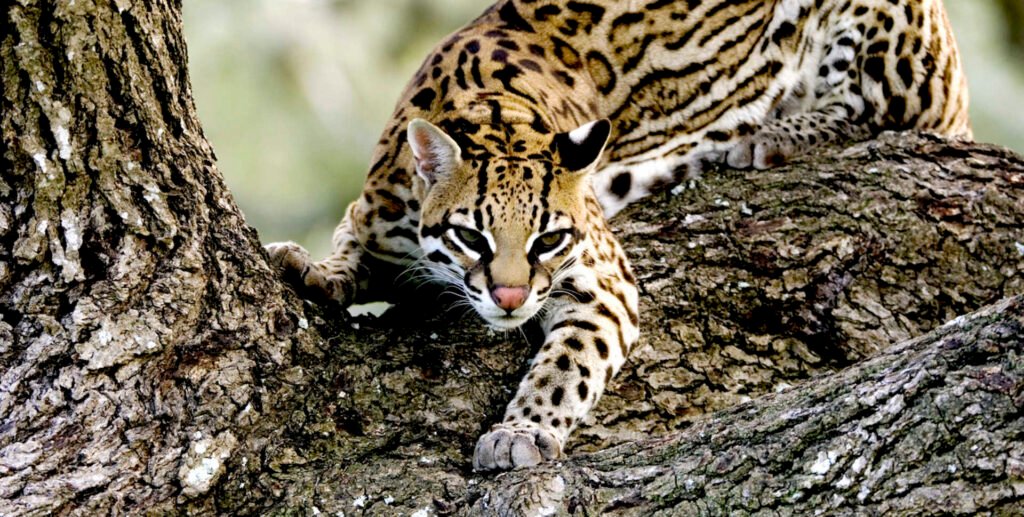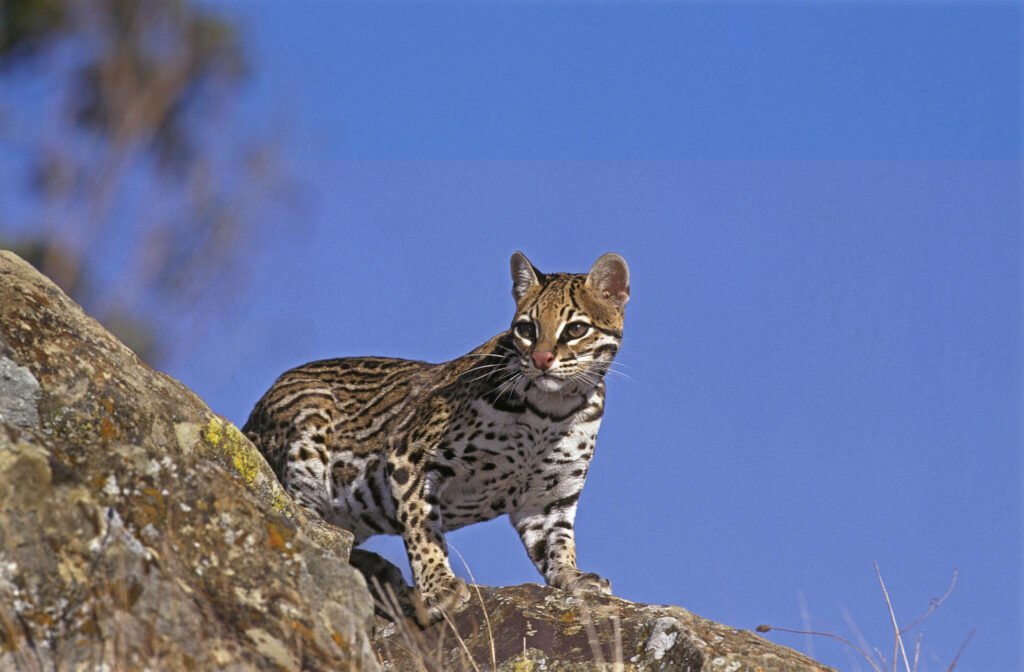
The ocelot, Leopardus pardalis, is a striking medium-sized wild cat found in the dense forests, scrublands, and coastal marshes of the southwestern United States, Mexico, Central, and South America. Renowned for its stunning coat, which features distinctive black rosettes and stripes on a tawny or yellowish background, the ocelot’s patterns are unique to each individual. This largely nocturnal and solitary hunter is a skilled climber and swimmer, spending its days resting in trees or dense vegetation and its nights hunting. Its diverse diet includes small mammals like rodents and opossums, birds, reptiles, and amphibians. Despite its relatively small size, the ocelot is a powerful and efficient predator, adapted to a wide range of habitats.

Ocelots play a significant role in maintaining the ecological balance of their diverse habitats. As effective mesopredators, they help control the populations of small to medium-sized animals, which in turn influences the health of plant communities and the overall biodiversity of the ecosystem. Their presence is often an indicator of a healthy and complex environment, as they require a good cover of vegetation for hunting and resting. By contributing to the natural regulation of prey species, ocelots ensure a balanced food web and prevent potential overpopulation of certain animals. The conservation of ocelots is therefore crucial not only for the survival of this beautiful cat but also for the preservation of the rich and varied ecosystems they inhabit across the Americas.
Every day, wild cats around the world face threats like habitat loss, poaching, and natural climate progression. But hope isn’t lost. With your support, we can protect these majestic animals and preserve their habitats.
Join our growing community of wildlife champions and help create a safer future for all 40 wild cat species.
Zoo-EV is a nonprofit organization dedicated to the protection and preservation of the world’s 40 wild cat species through education, community engagement, and conservation initiatives. Zoo-EV is recognized as a 501(c)(3) tax-exempt organization by the IRS, with the Employer Identification Number (EIN) 88-3636567.